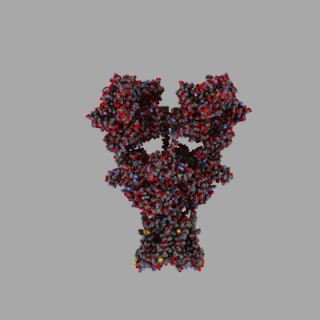Other receptors are metabotropic receptors (which depend on ligands, but use second messengers), voltage-gated ion channels (which depend on membrane potential), and stretch-activated ion channels (which depend on mechanical deformation of the cell membrane).
AMPARs are ionotropic glutamate-gated receptors (iGluRs); they are named after the selective agonist alpha-amino-3-hydroxy-5-methyl-4-isoxazolepropionic acid (AMPA).
These receptors mediate fast synaptic transmission in the central nervous system. They are non-selective cation channels, i.e. they allow the passage of Na+ and K+. The influx of Na+ and efflux of K+ via this channel yields an equilibrium potential near 0 mV.
Each AMPAR has four sites to which an agonist (such as glutamate) can bind, one for each subunit. The channel opens when two sites are occupied, current increases as three and four sites are occupied. After the channel opens it may undergo rapid desensitisation, which stops the current.
"The AMPAR's permeability to calcium and other cations, such as sodium and potassium, is governed by the GluR2 subunit. If an AMPAR lacks a GluR2 subunit, then it will be permeable to sodium, potassium, and calcium. The presence of a GluR2 subunit will almost always render the channel impermeable to calcium. This is determined by post-transcriptional modification - RNA editing - of the Q/R editing site of the GluR2 mRNA" [wikipedia].
The prevention of calcium entry into the cell on activation of GluR2-containing AMPARs is thought to guard against excitotoxicity.
The AMPA receptor GluA2 (GluR2) tetramer was the first and, as of 15 September 2013, only glutamate receptor ion channel to be crystallised.
Image: wikipedia

No comments:
Post a Comment